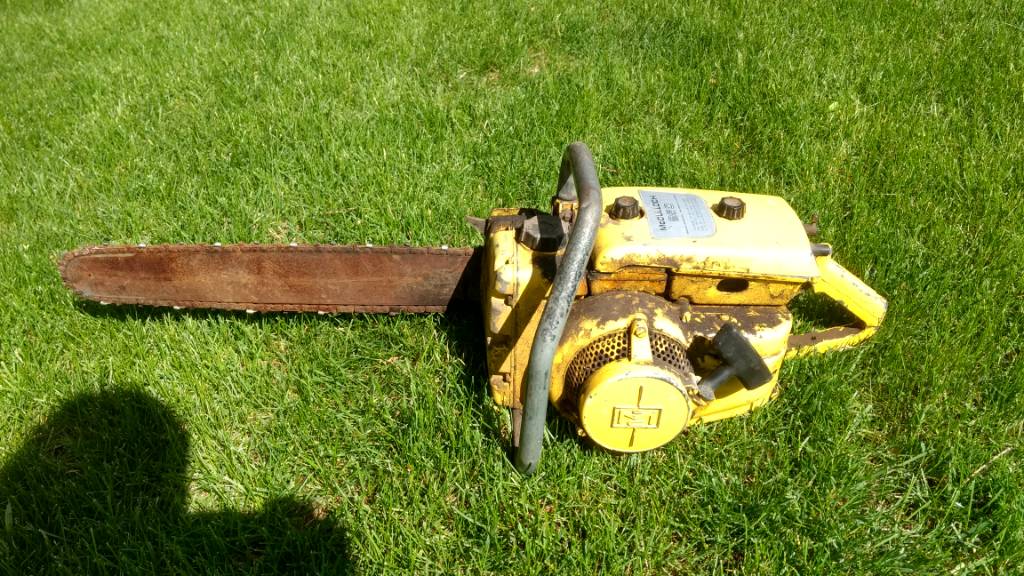Hi,
I've got a strong running early 1960's McCulloch 250. It is very clean and seems to have low hours. It has the original 20" solid nose bar on it.
My thought was to put a 36" bar and full chisel chain on it. I figured since it is 80cc and runs strong it should be able to handle it.
But someone cautioned me this might be a bit too optimistic... to think this saw will handle the 36" effectively. They suggested I would be better served with a 30" or 32" bar.
Is 36" too much bar for the saw?
What is the biggest bar you would run on it?
Back in the early 1960's what increments did McCulloch make their solid nose bars? (would be nice to have a period correct bar on it).
Did McCulloch even make sprocket tip bars for this saw during the early 1960's?
I've got a strong running early 1960's McCulloch 250. It is very clean and seems to have low hours. It has the original 20" solid nose bar on it.
My thought was to put a 36" bar and full chisel chain on it. I figured since it is 80cc and runs strong it should be able to handle it.
But someone cautioned me this might be a bit too optimistic... to think this saw will handle the 36" effectively. They suggested I would be better served with a 30" or 32" bar.
Is 36" too much bar for the saw?
What is the biggest bar you would run on it?
Back in the early 1960's what increments did McCulloch make their solid nose bars? (would be nice to have a period correct bar on it).
Did McCulloch even make sprocket tip bars for this saw during the early 1960's?










